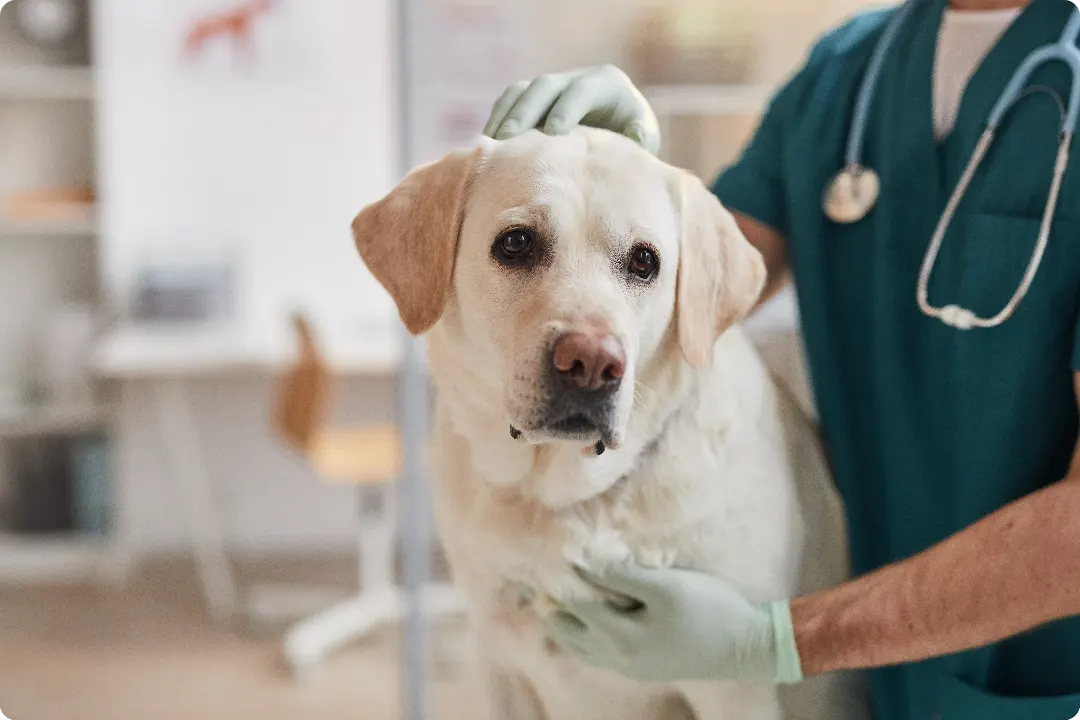
The Facts About Librela and Canine Osteoarthritis Pain
As fellow pet parents, we’re committed to creating products that are groundbreaking, effective, and most importantly, provide the highest quality of care for your dog.


As fellow pet parents, we’re committed to creating products that are groundbreaking, effective, and most importantly, provide the highest quality of care for your dog.

At Zoetis, we’re dedicated to maintaining transparency and upholding the highest standards for all our products. Since launching in Europe in 2021, Librela has been a valued product by veterinarians and pet owners alike and has been used effectively in millions of dogs suffering from osteoarthritis pain.
Librela has undergone robust testing and has been proven to be a safe and effective treatment for controlling osteoarthritis pain in dogs. With nearly 25 million doses distributed globally,1 we stand firmly behind Librela, and the positive impact it is having on dogs that suffer from osteoarthritis pain.
Always have a conversation with a veterinarian to consider the risks and benefits of adding any treatment.Please refer to the Client Information Sheet for more information about Librela.
Librela has been approved by the FDA and similar drug agencies in other countries to be safe and effective. But every dog is different, and yours may or may not be an ideal candidate for Librela. Your veterinarian can help you come up with a treatment plan that best suits your dog.
See the Client Information Sheet for more information about Librela.



Any new drug must undergo a rigorous testing and approval process to show that it’s safe for dogs and that it consistently does what it claims to do. It can take years for a product to hit the market after testing begins.

After more than 3 years on the market in Europe and with approvals in over 50 countries, millions of doses have been given. No single adverse event sign is reported at a rate higher than rare (defined as <10 per 10,000 dogs treated).*† Your vet can help you determine if Librela is the best treatment for your dog.
As with most medicines, there are potential side effects. In clinical studies, the following were most frequently reported:2,3
After the approval of Librela, additional side effects were reported. Not all side effects are reported to FDA/CVM. It is not always possible to reliably estimate side effect frequency or establish a causal relationship to product exposure and these additional side effects. Additional side effects in dogs reported are:
In some cases, death (including euthanasia) has been reported as an outcome of the side effects listed above. Always have a conversation with a veterinarian to consider the risks and benefits of adding any treatment.
*EMA Veterinary product information (QRD) templates – Annex I Summary of Product Characteristics. https://www.ema.europa.eu/en/documents/template-form/qrd-veterinary-product-information-annotated-template-english-version-91_en.pdf. Accessed 17 December 2024.
†This information has been collected after approval and is based on pharmacovigilance reports and assessments. These data are dependent on voluntary reporting by veterinarians and pet owners; therefore, underreporting occurs, and more serious adverse events may have higher rates of reporting for some products.
**For the vast majority of dogs, an elevation in blood urea nitrogen was not associated with kidney disease.

In a recent survey, nearly 8 out of 10 vets said they were very satisfied with Librela.5 We work closely with veterinarians to ensure they’re given the most up-to-date information about each product and to receive their firsthand feedback.
Though OA pain can affect dogs of all ages, breeds, and sizes, it often co-exists alongside other conditions, particularly in elderly dogs. We carefully monitor feedback from both vets and pet parents as we seek to better understand Librela’s role in improving dogs’ quality of life.
Please refer to the full Prescribing Information and Client Information Sheet for approved product labeling and Important Safety Information. Call our medical support team at 1‑888‑963‑8471 or click the link below.
IMPORTANT SAFETY INFORMATION: See full Prescribing Information. For use in dogs only. Women who are pregnant, trying to conceive or breastfeeding should take extreme care to avoid self-injection. Hypersensitivity reactions, including anaphylaxis, could potentially occur with self-injection. Librela should not be used in breeding, pregnant or lactating dogs. Librela should not be administered to dogs with known hypersensitivity to bedinvetmab. The most common adverse events reported in a clinical study were urinary tract infections, bacterial skin infections and dermatitis.
INDICATIONS: For the control of pain associated with osteoarthritis in dogs.
See the Client Information Sheet for more information about Librela.